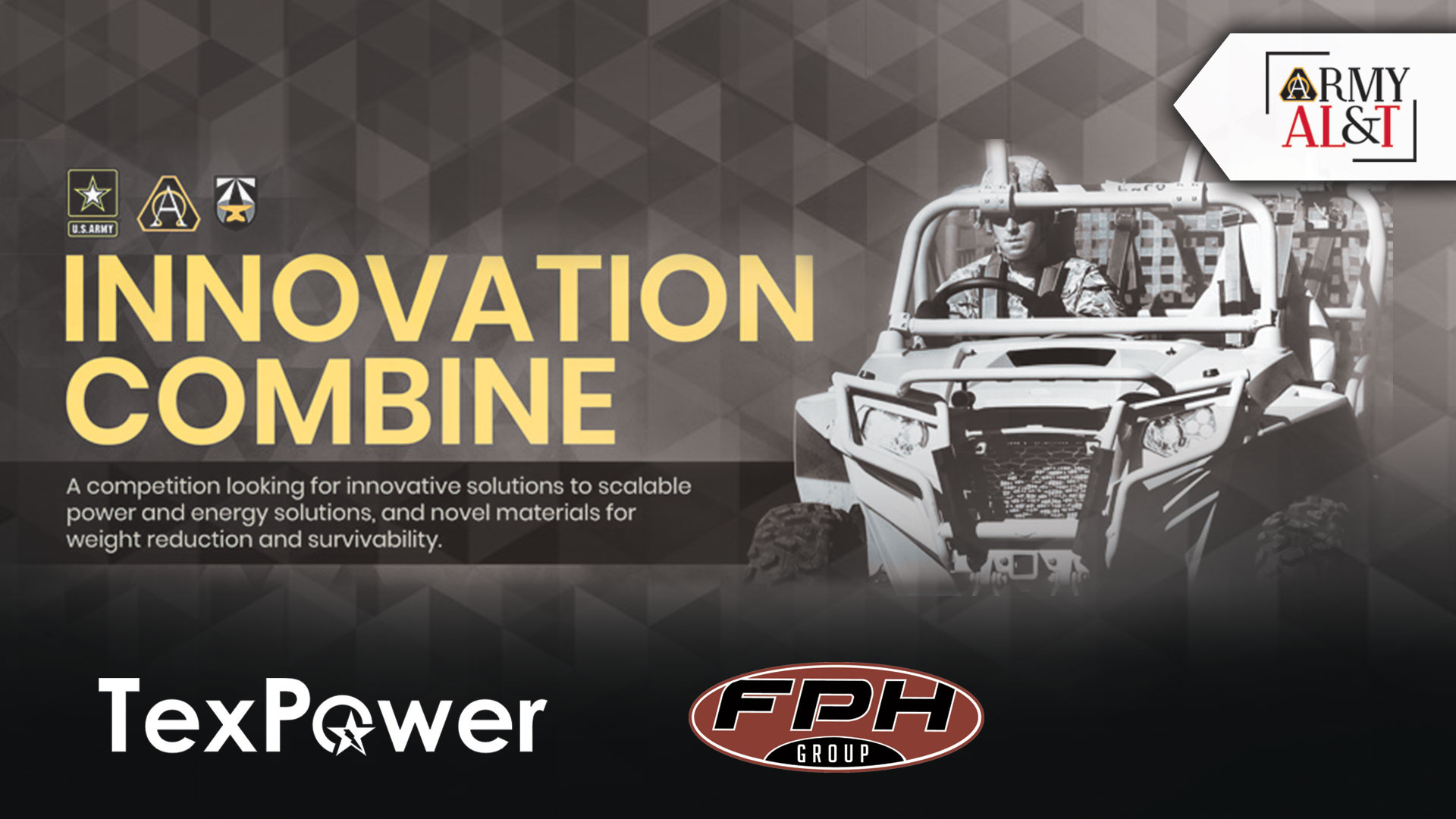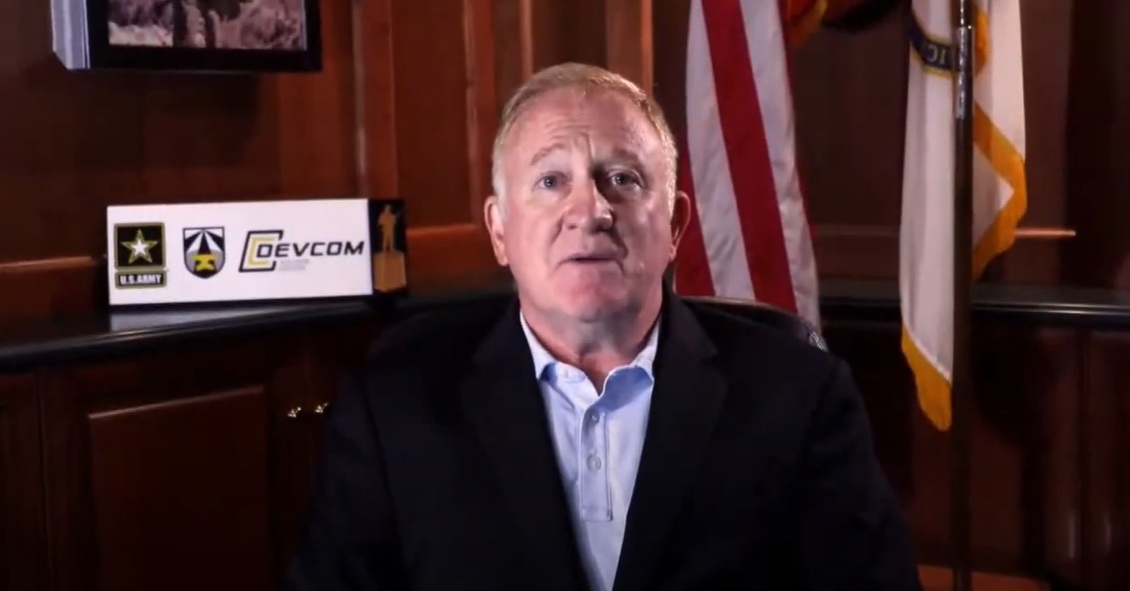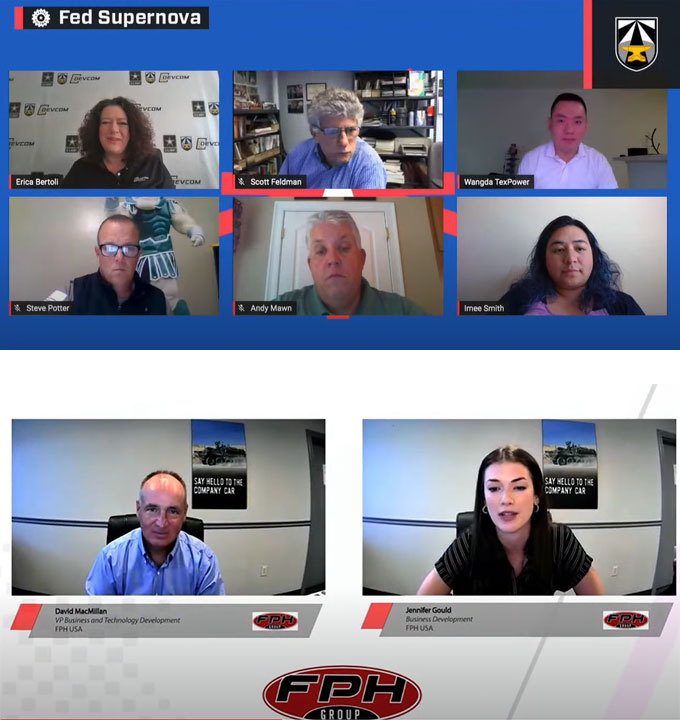
Innovation Combine finds better, cheaper and faster in more ways than one.
By Kristin Mcnelis
Finding novel technology solutions to the Army’s modernization challenges is just that—challenging. This was the case for the U.S. Army Combat Capabilities Development Command Ground Vehicle Systems Center (CCDC GVSC) as it searched for ways to enable lightweight military ground vehicles with affordable novel materials for weight reduction and survivability. The CCDC Soldier Center was also looking for scalable power and energy solutions—innovative ways to find lighter, energy dense, safe and rechargeable batteries.
Part of the Army Futures Command, these organizations collaborated on a different approach to solving their problems. They wanted to discover solutions that the Army might not know were out there from the innovative small business and startup communities. The group came up with the idea of the Innovation Combine, a problem-specific pitch competition that offered an opportunity for an other-transaction authority-based contract at the end that would enable the companies to continue working with the Army, in addition to receiving a prize-money award.

THE LOWDOWN: Mr. Douglas Tamilio, director of the U.S. Army Soldier Center, provided an overview of the Army’s need for scalable power and energy solutions. (Photos courtesy of U.S. Army CCDC)
“The Army Futures Command built the Innovation Combine around the idea that a pitch competition is a means to an end. Our goal was to attract small businesses, investors, academia and industry to a networking event and focus their attention on Army problems,” explained Lt. Col. Anita McGinthy, Army Futures Command orders and events manager. “We advertised the event as a pitch competition, and then we built the competition within Army programs. We combined CCDC’s model for a focused competition for contract awards, with the ASA(ALT) [assistant secretary of the Army for acquisition, logistics and technology] model for a broad competition for cash awards. Then, we invited all of the small businesses who responded to the event—not just those selected to pitch at the event. Because the competition was nested within Army programs, the small businesses themselves drew the investors, industry scouts, academia and other cohorts seeking to do business with the Army.”This first-of-its-kind competition used the framework and business model developed for the Army’s Expeditionary Technology Search (xTechSearch) competitions and blended it with CCDC GVSC’s “flash-to-bang” other-transaction authority process. They wanted to attract companies from the nontraditional industrial base to provide an easier way to work with and engage the Army. Through the pitch competition, those innovators would be able to network, make connections and learn about how to do business with the Army.
One of the unique benefits of the Army pitch competition model used by the xTech Search program is that it works to bring potential Army customers to the companies to listen to their pitches and understand their technologies. The idea is that the small companies can start developing a relationship between Army subject matter experts and technology innovators. Not only does the Army want to invest in innovation, it also wants to invest in future suppliers by assisting in making connections with them.
How the Innovation Combine Worked
The Innovation Combine launched on March 15 and included two problem statements:
Scalable power and energy solutions: The Army has a need for lighter, energy dense, safe, rechargeable batteries that can be demonstrated at the battery prototype level of 400 watt-hour per kilogram (Whr/kg) (cell level 500 Whr/kg), or a small form factor, lightweight (less than 5-6 pounds, including fuel) power-generation system that could include fuel cells or small engine technologies to recharge batteries while on the move.
Novel materials for weight reduction and survivability: For military ground-vehicle structures, ballistic and blast load requirements often trump structural requirements, leading to very thick structures. Contrary to aerostructures, thick ground-vehicle structures need materials with high strength and elongation capabilities rather than ultra-high stiffness materials. To enable lightweight military ground vehicles, there is a need for affordable materials that are resilient to high loading-rate events and are able to absorb large amounts of energy without breaking.
The challenge of novel materials for weight reduction and survivability is relevant to CCDC GVSC. “As we look to integrate advanced capabilities onto these platforms, lightweight materials are necessary to offset the added weight from sensor packages, power terrain upgrades and more. Lighter-weight vehicles can be transported easier and at lower cost. Moreover, these vehicles with increased mobility may lead to more favorable outcomes in theater,” explained Dr. Robert Hart, senior mechanical engineer at CCDC GVSC.
Scalable power and energy will help to address power demands that are expected to increase as Army modernization continues. Dr. Douglas Tamilio, director of the CCDC Soldier Center, explained that “left as is, the current commercial batteries and small power-generation systems will not satisfy the higher demand without increasing the physical and cognitive load on our Soldiers. Scalable power and energy are so important.”
In Phase 1, U.S.-based companies submitted their white papers outlining their respective technologies and viability, the potential impact on the Army and other dual-use cases. A panel of Army judges reviewed the white papers and selected 28 companies to compete in Phase 2 and earn a cash prize of $5,000 each.
During Phase 2, the 28 companies submitted prototype project proposals, with eight finalists then selected to present their projects at the Innovation Combine event July 14–15. The 20 runners-up were invited to participate at the Innovation Combine event with free booth space and the opportunity to host office hours, to take full advantage of the networking experience. The selected finalists, four for each topic area, also joined the National Advanced Mobility Consortium, making all eight finalists eligible for an other-transaction authority agreement.
For Phase 3, the final presentations were held at the Innovation Combine, part of a first-of-its kind virtual conference called the Fed Supernova, held July 14–16. The Fed Supernova was hosted by the Capital Factory in Austin, Texas, connecting leading entrepreneurs, investors, thought leaders, corporations and defense industry decision-makers.
The two winners, TexPower Inc. and FPH USA, were selected for other-transaction agreements during the Innovation Combine event and received an award of $45,000 each. The remaining six companies received $15,000 each and will have their proposals placed in the “GVS other-transaction authority electronic basket,” making them eligible for an award until June 17, 2023. Read more about their technologies below:
Topic A: Scalable Power and Energy Solutions
TexPower Inc., from Austin, Texas, was the winner of Topic A for its cobalt-free high-energy lithium batteries. Their next-generation battery solution can lengthen battery life without relying on costly metals to manufacture. Using a cobalt-free, ultrahigh-energy cathode and lithium metal anode, TexPower’s solution can be simple and flexible for modern Army equipment reducing the need for heavy and complex auxiliary power sources.
Black Diamond Structures, from Austin, Texas, developed a discrete carbon nanotube additive for enhanced performance and safety of Army lithium ion batteries, called Molecular Rebar. This nanomaterial derivative is based on proprietary discrete carbon-nanotube technology that augments battery active material and increases energy density by enabling higher silicon percentage loadings while also enhancing the lifecycle and reducing impedance growth.
LiquidPiston Inc., from Bloomfield, Connecticut, developed a compact and efficient rotary diesel combustion engine. The company’s “gearless” version of its rotary diesel “X” engine is 90 percent smaller and lighter than a piston engine, while also 30 percent more fuel efficient and capable of being scaled down to less than one horsepower. The system with one cartridge exceeds 400 Whr/kg, and it approaches 600 Whr/kg with two cartridges.
Spark Thermionics, from Emeryville, California, pitched small form factor, flexible thermionic generators. Electrons evaporate from a hot electrode into a vacuum gap and are collected by a cooler electrode, generating current. Their key attributes include extremely high power density, simplicity and modularity, scaling for any power need from individual Soldier (20-plus watts, proposed here), to small squad or platoon power (300-plus watts) and beyond.

FIRST OF A KIND: Final presentations were held July 14–16 during a first-of-its kind virtual conference called the Fed Supernova, at the Innovation Combine. The virtual conference was hosted by the Capital Factory in Austin, Texas.
Topic B: Novel Materials for Weight Reduction and Survivability
FPH Group USA, from Roseville, Michigan, was the winner for Topic B for its novel materials for weight reduction and survivability called FPH-Tough (FPH-T). FPH-T is a unique combination of lightweight, durable and high-modulus constituents that provides an alternative to glass-fiber composites and metallics. The company proposed a final prototype to be a completely validated rear ramp door for the U.S. Army’s Stryker vehicle, proving a weight reduction of approximately 50 percent and improved survivability.
Mafic USA, from Shelby, North Carolina, developed a solution using basalt high-performance composite fabric as vehicle armor. This technology reduced weight and cost while retaining comparable protection capabilities. This recyclable and sustainable fabric is lightweight with ballistic-, blast- and shockwave-protection capabilities.
Maynard Steel Casting Co., from Milwaukee, developed lightweight, all-steel, precision-engineered, low-density prototype panels for use in military ground vehicles using a patented sand-cast process. This proposed solution can enable the Army to utilize a lightweight ballistic and blast material for military systems and significantly reduce overall vehicle weight while retaining or improving ballistic protection.
UHV Technology Inc., from Lexington, Kentucky, presented an affordable option for manufacturing military-grade lightweight metal alloys from recycling domestic automotive scrap. This cost-saving solution includes a patented aluminum recycling sorting technology that uses the latest artificial intelligence combined with a melting process of low silicon aluminum alloys.
Read the full article in the Fall 2020 issue of Army AL&T magazine.
Subscribe to Army AL&T News – the premier online news source for the Army Acquisition Workforce. ![]() Subscribe
Subscribe







